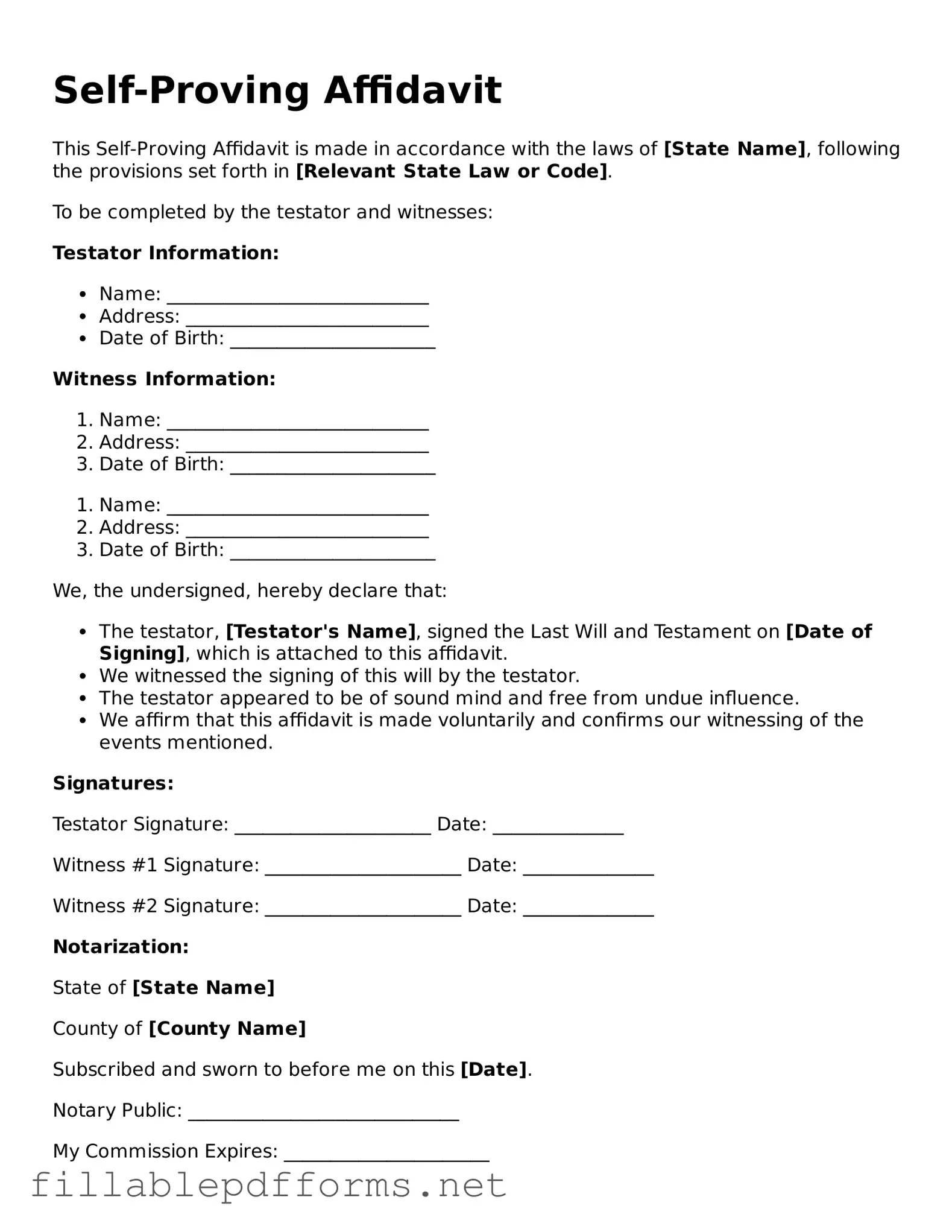The Self-Proving Affidavit form plays a crucial role in the estate planning process, particularly when it comes to validating a will. This document serves as a means for the testator and witnesses to affirm the authenticity of the will, thereby streamlining the probate process. By including a Self-Proving Affidavit, the need for witnesses to testify in court can be eliminated, which can save time and reduce potential disputes among heirs. Typically, the form includes a statement from the testator, affirming that they signed the will willingly and were of sound mind at the time. Additionally, the witnesses provide their signatures, attesting to the testator's capacity and the voluntary nature of the signing. This not only bolsters the will's legitimacy but also offers peace of mind for those involved. Understanding the importance of this form is essential for anyone engaged in estate planning, as it can significantly impact the administration of a deceased person's estate.
